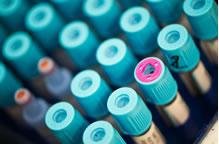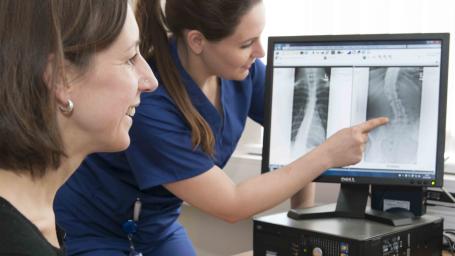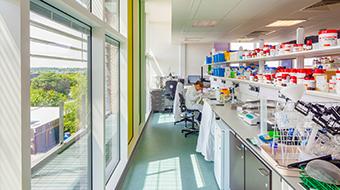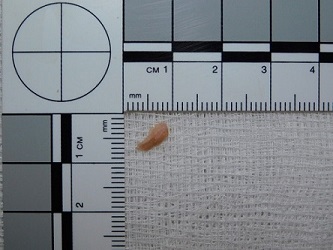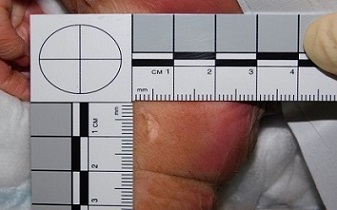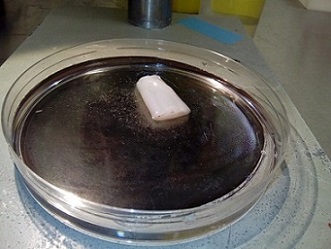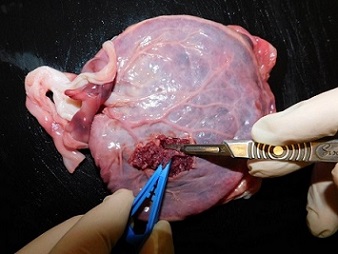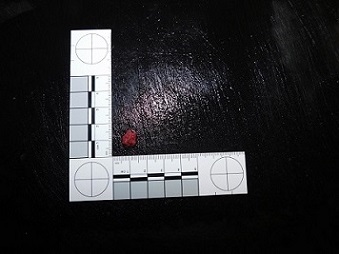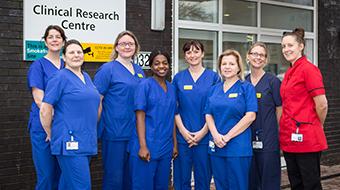Introduction
This information aims to increase your knowledge before and after your bariatric surgery. If there is anything you are unsure about, please ask.
Discharge from hospital
You are usually discharged by 10am the next day following your operation (except for gastric band patients who are discharged the same day). The doctor and specialist nurse will see you before discharge to ensure that you are medically fit to go home.
When you leave hospital
Complications should not happen very often, but it is important that you know what to look out for. During the first two weeks after surgery, if you are worried about any of the following, please phone the telephone numbers at the bottom of the page. If you cannot contact anyone you will need to contact your GP, NHS 111 or return to Southmead Hospital.
Abdominal pain
It is not unusual to have abdominal discomfort after having bariatric surgery. Worsening severe pain that lasts for several hours may indicate a leakage of fluid from the areas where the bowel and stomach has been joined together. This is a serious complication, which fortunately happens rarely. Should this occur, it may be accompanied by a fever.
If you experience worsening severe pain that lasts for several hours, you should contact the bariatric team immediately or come straight to Southmead Hospital A & E department.
Vomiting
Occasionally after surgery you can experience some nausea which is not unusual. You will be sent home with anti-sickness medication.
If you have persistent nausea and vomiting the bariatric team should be contacted immediately.
Wounds
There are normally 5-6 laparoscopic wound sites (the areas on your body where the laparoscope was used) that will have dissolvable stitches and glue over the top. You can continue to shower as usual but avoid baths until wounds are fully healed.
It is not unusual for your wounds to be slightly red and tender during the first 1-2 weeks.
You may also notice some bruising, but please let us know or contact GP if your wound:
- Becomes more red, swollen, or painful.
- Starts to discharge fluid/pus.
- Your wound edges separate.
This may indicate an infection, please contact your GP or Practice Nurse.
Bowels
In the initial stages following surgery its quite common to have constipation or diarrhoea, due to eating less. If you have no bowel action for 3 days or more, ask your GP to prescribe you a laxative (Sugar Free Liquid Sodium Docusate), but avoid Fybogel or Movicol.
DVT (Deep Vein Thrombosis)
If you are having a Gastric Bypass, Sleeve or Band insertion, you will be going home self-administering Enoxaparin and wearing TED stockings for 2 weeks to prevent DVT.
However, a friend or family member can administer the Enoxaparin if preferred.
Enoxaparin contains product derived from pigs. If you have any ethical objections to the use of animal products, please discuss this with the team before using Enoxaparin.
Work
Many people can return to work within 4-6 weeks following their surgery, but your GP can extend this if required and a sick note will be given upon discharge if required.
Driving
It is advised that you do not drive until you are confident that you can drive safely. In general, this will be 2-4 weeks after surgery. It is important that any pain has resolved sufficiently to enable you to perform an emergency stop, check your blindspot and drive safely. You should contact your insurance company to check their terms.
Hobbies and activities
In general, it is advised that you take up your hobbies and activities as soon as possible again after surgery. It enables you to maintain your activity and will benefit your recovery.
We would not advise restricting your hobbies unless they cause significant pain or involve heavy lifting within the first 6 weeks after surgery.
We would also advise not to go swimming until the wounds have completely healed.
Sexual activities
Feeling tired and weak after an operation naturally affects your sex drive. As you gradually start to feel well again and your energy levels return to normal, so should your sex drive. Sexual intercourse can be resumed as soon as you feel comfortable, about 2-4 weeks after surgery.
We would advise you not to get pregnant for 18 months to 2 years after the operation, to protect yourself and the baby from potential malnutrition.
Medications
Your medications would have been discussed before your operation with the pharmacist and a plan created. You will be given painkillers and other medication to take home, including Lansoprazole which helps prevent acid reflux.
All medications need to be crushed or in liquid form (apart from the multivitamins/Calcium which are chewable).
Supplements
You need to take vitamins and minerals for life after your bariatric surgery.
If you have had a gastric bypass or sleeve gastrectomy you will also need vitamin B12 injections every 3 months.
- Iron: Liquid Iron (Ferrous fumarate sugar free syrup 140mg/5ml), once daily at lunchtime. To improve absorption, please do not take it the same time as the calcium. Once you are back onto solid foods (normally by 4-6 weeks after surgery) you can switch to a tablet form of iron – please speak to your GP about this.
- Calcium and Vitamin D: Adcal D3 which is one tablet to be chewed twice a day (morning and evening).
- A-Z Multivitamin and Mineral: You will need to buy chewable A-Z multivitamins and take one dose two times a day. Once you are back onto solid foods (normally by 4-6 weeks after surgery) you should switch to a tablet A-Z multivitamin with minerals as these are more complete than the chewable ones. Suitable ones are listed in your main/large bariatric leaflet.
- Vitamin B12 Injections: You will need to arrange this at your GP practice. You will require a 1mg, intramuscular injection 3 months after your operation, then every 3 months for the rest of your life.
All medication can be taken in tablet form 4-6 weeks after the operation.
Contact details
Bariatric Co-ordinators:
Bariatric Clinical Nurse Specialist: 0117 414 7557
If you or the individual you are caring for need support reading this information please ask a member of staff for advice.
If you’re an overseas visitor, you may need to pay for your treatment or you could face fraud or bribery charges, so please contact the overseas office:
